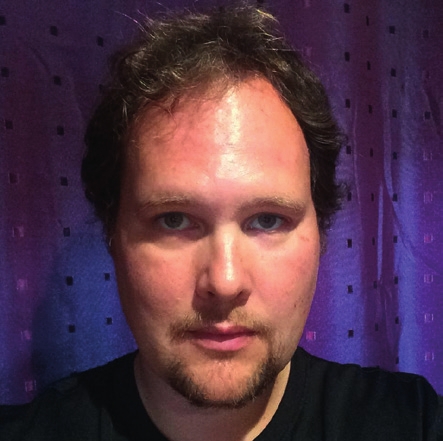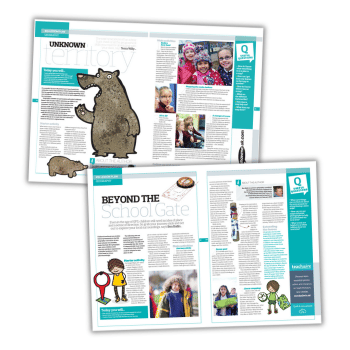Primary geography curriculum – Top tips from Mark Enser

In his new book, Mark aims to empower teachers to design and deliver an effective geography curriculum…

- by Mark Enser

In Powerful Geography: A curriculum with purpose in practice, experienced teacher Mark Enser breaks down the core elements of curriculum planning for geography and provides subject-specific guidance.
Suitable for subject leads in primary schools, the book explores both the purpose of the geography curriculum and its various applications in practice.
Part one examines the role of the school in society and shows the place that geography occupies within it. Part two is a practical guide which illustrates how to but the theory of curriculum purpose into practice.
Below is an extract from Powerful Geography’s introduction, courtesy of Crown House Publishing and Mark Enser.
“Anything is geography.”
These three words defined the thinking around the geography curriculum when I started teaching in 2004 and, for a while, this seemed hugely exciting.
Geography is such a broad discipline that we could – we were told – study anything in our classrooms, put anything into our programmes of study, at least until we had to prepare for an exam specification, and we could call it geography. And so we did.
We would create units on the geography of crime in which pupils would consider how different stakeholders felt about a crime that had taken place and, as a result, develop empathy, or study the geography of sport and plot the location of Premier League football stadiums and, as a result, relate the subject to pupils’ interests.
They could study the geography of fashion and learn about the deplorable conditions of sweatshops and, as a result, hopefully change their shopping habits. What mattered wasn’t the content but the result of studying it.
The problem is that once we decide that “anything is geography”, it starts to become clear that therefore nothing is geography. If geography is the development of empathy, the study of things familiar to pupils, and an attempt to make them more conscientious consumers, then what unites it as one subject?
How do we define this subject? As I will describe in this book, our subject became lost as it was turned into a vehicle to deliver learning around a range of social issues – according to political priorities – and soft skills to prepare pupils for the needs of an imagined 21st century.
Although you could see elements of this in a range of subjects, I think it was a particular issue in geography because it is an unusually messy discipline.
Geography, as a field of study, has a long history stretching back at least as far as the ancient Greeks and the scholar Eratosthenes, who originated the term, coming from the title of his book Geographica.
However, as an academic university discipline its history only reaches as far back as the 19th century, and much of its expansion occurred in the early 20th century as a way of providing geography teachers to schools.
This adolescent subject is still testing its boundaries and seeking to define its role (something which we will discuss further in Chapter 2). As it has gone through this period of reflection it has become too easy for it to be led astray by those who would use it to further their own ends.
These years of confusion are a huge shame as geography has the potential to be a truly powerful subject. An understanding of the planet that we call home – how it works, how human and physical processes interact and lead to change – can transform those who study it and open up new vistas from which they can view the world.
It is this notion of powerful geography that I wish to explore in this book, building on the idea of powerful knowledge developed by Michael Young and of GeoCapabilities developed by David Lambert and others.
I hope that this book will be a practical guide to developing a curriculum with a clear purpose behind it – a purpose which is carried out in practice in the classroom. I will argue that a powerful curriculum needs a clear purpose driving it.
Without this clear purpose we will once again get led off into the territory of “anything is geography”. The first part of this book will therefore consider the issue of purpose by looking at the role of the school in society and then showing the place that geography occupies within it.
We will then consider the history of our subject so as to better understand where we stand today and look in more detail at how we lost sight of geography in the geography classroom.
The first part will conclude by discussing how the concepts of powerful knowledge and GeoCapabilities can help us to find our way again.
The second part is a practical guide which illustrates how to put this theory of curriculum purpose into practice. It explores the steps which must be taken to create a powerful geography curriculum by deciding on content and places to be studied, putting the components into a sequence and then using all this to do geography.
It will also discuss the extent to which we need to consider the future and respond to the concerns of the wider world when planning our curriculum. It is worth stressing at this point that this book is not just for heads of department and subject leads.
The curriculum is not created by one person writing out a programme of study but by each and every teacher in the classroom. The word curriculum derives ultimately from a Latin word describing the route of a race, a journey.
It is, excitingly for us geography teachers, a map. It is the individual teacher who takes their pupils on this journey and so it is the individual teacher who must take responsibility for understanding their map, especially as they will inevitably alter the route as they teach, finding new tangents to explore and bringing in examples and references from their own lives, interests and experiences.
A curriculum is created many times over: set out by national bodies, interpreted by subject associations such as the Geographical Association and Royal Geographical Society, written by individual school departments, and then created again in the classroom as the teacher brings it to life.
Mark Enser has almost 20 years of geography teaching experience, and is head of department and research lead at Heathfield Community College, as well as a specialist leader of education (SLE) and evidence lead in education (ELE). Follow Mark on Twitter at @EnserMark, and buy the book at Crown House Publishing here.







